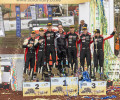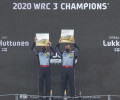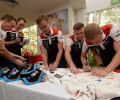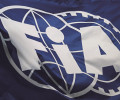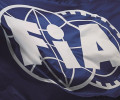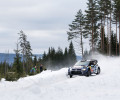In the blink of an eye, 40 years disappeared
40th anniversary of the World Rally Championship
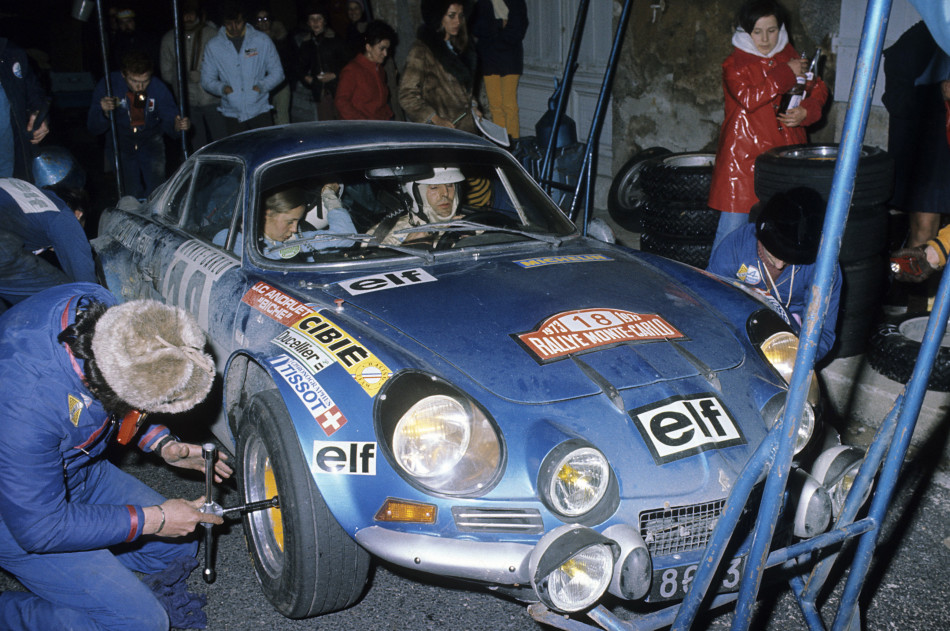
Then, it was 1973 and Jean-Claude Andruet and Michele Espinos celebrated a 26-second win on Rallye Monte-Carlo. Now it’s 2013 - the 40th anniversary of the World Rally Championship - and Espinos, known throughout the rally world as “Biche”, was back to mark the memory of those spectacular years of world rallying that began on 19 January that year.
The result for “Biche” this time around simply didn’t matter. She was reliving a win and rewinding the clock for everybody.
The FIA World Rally Championship has changed enormously in the last 40 years – but not as much as the sport of rallying had altered in the decades leading up to 1973.
Road-based competition began with the 1894 race from Paris-Rouen, with city-to-city events the norm in the early days. The highest profile rally of them all - Rallye Monte-Carlo - ran for the first time in 1911 and remains among the world’s most iconic motor sport events today.
Early events were based around navigation, and, if the introduction of special stages in the 1950s changed the nature of events, (the first ever FIA Rally Championship was introduced in 1953 and was named the European Touring Championship) the use of factory teams and more highly-tuned and specifically developed cars certainly shaped the rally cars of the Sixties.
But nothing prepared rally fans for the Seventies, when the world and the World Rally Championship really took off.
As the new decade dawned, there was a realisation within the Commission Sportive Internationale - the sub-division of the FIA responsible for sport - that some of the sport’s more iconic events needed to be collected together. Don’t forget, it was already some time since Giuseppe Farina celebrated the first Formula One World Championship in 1950.
So, in 1970, the International Championship for Makes was inaugurated. And, three years later and four decades before today, this was followed by the World Rally Championship for Manufacturers.
And, 40 years on, that first-ever WRC calendar bears a striking resemblance to 2013, with Monte-Carlo, Sweden, Portugal, Greece, Finland, Italy, Britain and France all still represented.
The Alpine Renault was the force to be reckoned with in that maiden season. The French firm won the first title and a Frenchman (Jean-Luc Thérier or Jean-Pierre Nicolas) would have taken the silverware for the drivers had it been around (a Drivers’ Championship would follow in 1979).
The Sixties might have set the scene for special cars, but it was the Seventies and the Stratos which sent the sport stratospheric. Lancia’s sensational Ferrari-engined Stratos demolished everything in its path through the middle 1970s.
But with the dawn of a new decade, the seat of world rally power shifted from Italy to Germany after Ingolstadt thought outside the box and made four – Quattro – the only number that mattered in world rallying.
In terms of a revolution, Audi’s turbo-charged Quattro was the real deal. A true game-changer, the total-traction machine overcame teething troubles to establish complete domination of the sport in 1982. Walter Röhrl and Lancia worked hard to defend the honour of rear-wheel drive, but in 1984 the whitewash came.
Significantly, regulations had changed in 1983, with Group B replacing Group 4 as the premier category of world rallying. Fundamentally, this change opened the sport up to become the Formula One of the forests.
Manufacturers now only had to produce 200 homologation specials (as opposed to 400 for Group 4) and Peugeot, Lancia, Austin Rover, Ford and Citroën were quick to seize the moment to develop what would become the most memorable cars the sport ever produced.
Audi led the revolution, but it was Peugeot and the 205 T16 which took it to the next level. With upwards of 500bhp being diverted to all four driven wheels, the ability of these cars to cover loose surfaces was quite simply staggering.
But, what would be the sport’s most exhilarating era was also its most dangerous. Tragically, there were deaths among the drivers – including Henri Toivonen in Corsica – and spectators, and FISA (the renamed governing body) acted swiftly. Group B ended as a Championship formula in 1986.
The shift to Group A regulations brought a far bigger reliance on manufacturers producing standard four-wheel drive, turbo-charged cars – manna from heaven for Lancia’s Delta. The Italian’s went back to the front and dominated world rallying again.
In 1997, the governing body introduced perhaps the most significant change of all in the WRC, when World Rally Cars were permitted. World Rally Cars commanded a production run of 25,000 cars – but those cars didn’t have to be four-wheel drive. Car makers returned to the sport of rallying in their droves, with as many as seven manufacturers involved in what would be one of the WRC’s most popular eras.
But the cars were only part of the story. In the Sixties, the Scandinavians had arrived with their famous flick and another use for the left foot. Rauno Aaltonen and Timo Mäkinen transformed the way people drove rally cars and that north-European domination developed through the 1970s and into the Eighties. But then, with the sport’s ever-increasing popularity, came champions from the south with Italian ace Miki Biasion and Spanish superstar Carlos Sainz setting new standards for professionalism. And then there was Colin. Scotsman Colin McRae won the 1995 title with a stunning display of on-the-limit driving. In latter years, McRae would take world rallying to the next generation in a multi-million selling computer game.
And finally, there was Sébastien, an Alsatian gymnast who turned out to be the finest rally driver ever to grace the globe. Loeb has redefined what success means with 77 rally wins and nine world titles. The numbers alone are almost beyond comprehension and the sport’s love of Loeb is complete.
A few days ago, Loeb met “Biche” for the first time. The pair chatted briefly, but their world went beyond words. They were, are and always will be the beginning and the end of the World Rally Championship’s first four decades.

 Facebook
Facebook Twitter
Twitter